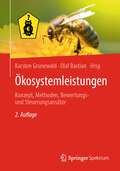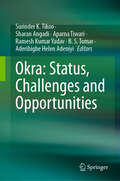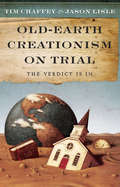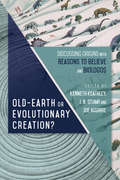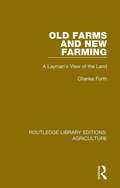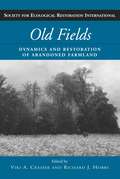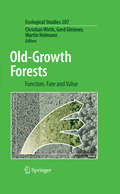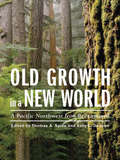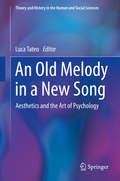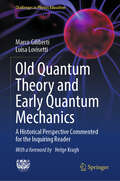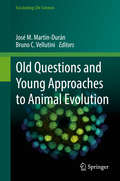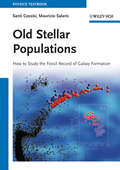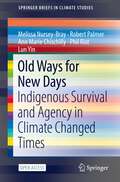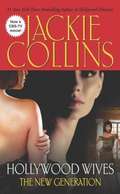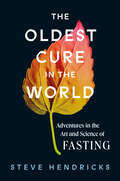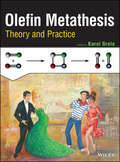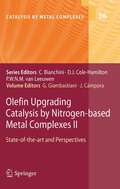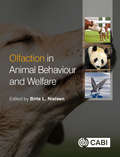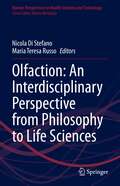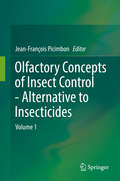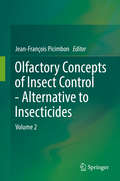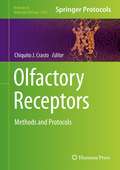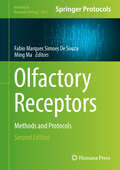- Table View
- List View
Ökosystemleistungen: Konzept, Methoden, Bewertungs- und Steuerungsansätze
by Karsten Grunewald Olaf BastianDie Natur liefert uns viele Leistungen gratis: So bildet sich Grundwasser neu, bleiben Böden fruchtbar, erzeugt die Photosynthese pflanzliche Biomasse. Wir Menschen ziehen aus diesen „Ökosystemdienstleistungen“ (kurz: ÖSD) vielfältigen Nutzen, sei es für die Ernährung, die Versorgung mit Wasser, für die Erholung oder den Schutz vor Naturgefahren. Große internationale Studien wie das Millennium Ecosystem Assessment haben sich eingehend mit den weltweit von Ökosystemen bereitgestellten Leistungen befasst und eindringlich auf die Folgen hingewiesen, die mit deren Verminderung oder Verlust einhergehen.Dieses hochaktuelle Thema wird von Wissenschaftlern ganz unterschiedlicher Disziplinen bearbeitet. Herangehensweisen, Begriffs- und Methodenverständnis sind entsprechend vielfältig. Was ist zum Beispiel mit Leistungsfähigkeit der Natur oder mit Naturkapital gemeint? Welche Werte der Natur sind besonders wichtig, wie sind sie verteilt und wie beurteilt bzw. vermittelt man sie? Können alle Ökosystemdienstleistungen einzeln und als Summe quantifiziert oder gar monetarisiert werden? Was ist zu tun, damit uns die vielfältigen Leistungen der Natur auch zukünftig zur Verfügung stehen?Das vorliegende Buch erläutert das vielschichtige Konzept der Ökosystemdienstleistungen, zeigt einen methodischen Rahmen zu ihrer Analyse und Bewertung auf und diskutiert Fallbeispiele, vor allem aus Deutschland.Angesprochen sind Wissenschaftler wie Praktiker aus dem behördlichen, ehrenamtlichen und freiberuflichen Bereich, vor allem im Umwelt- und Naturschutz sowie der Regional- und Flächennutzungsplanung, Fachleute aus der Wirtschaft, auf politischen Bühnen Tätige, Studierende sowie alle, die sich für ökologische, ökonomische, ethische und umweltpolitische Grundsatzfragen sowie Belange von Ökosystemen und Landschaften interessieren.Für die 2. Auflage wurden alle Kapitel aktuell überarbeitet, die Methoden und der Bezug zu Ökosystemtypen stärker betont.
Okra: Status, Challenges and Opportunities
by Surinder K. Tikoo Sharan Angadi Aparna Tiwari Ramesh Kumar Yadav B. S. Tomar Aderibigbe Helen AdeniyiThis edited book covers all aspects of Okra and its global status. It includes general characteristics, classification, and description of various domains affecting crop improvement, such as the latest trends in breeding, genomics and molecular marker development, biotic and abiotic stress, nutritional quality aspects, seed production, and the export and market expansion scenario of Okra. Okra (Abelmoschus esculentus L. Moench) is an important vegetable crop grown throughout the tropical and subtropical regions of the world. In the last five years, okra has gained recognition as a global crop due to its nutritional values being recognized by consumers. The global seed requirement is expected to reach 6000 MT by 2030, making it a $300 million crop soon. This book compiles extensive knowledge on various aspects of okra, such as crop improvement, agronomy, seed production, and global market status, under the aegis of Foundation for Advanced Training in Plant Breeding (ATPBR). This book is designed for breeders, pathologists, biotechnologists, seed production specialists, market managers, graduate and post-graduate students, and other stakeholders associated with okra crop improvement or market development from both the public and private sectors. It serves as an excellent guide for crop scientists and students working on okra around the globe, helping to generate ideas for formulating public-private collaborative research for future innovation in the crop.
Old-Earth Creationism on Trail
by Dr Jason Lisle Tim Chaffey"Twenty-somethings once faithfully attended church. What made them stop? While most said they still believe that the Bible is God's Word, they also said that the idea that the earth is millions of years old was one thing that caused them to doubt the bible? The crumbling foundation of the church takes a devastating toll on future generations. Therefore, churches must reclaim the historical truth found in Genesis and apply the Bible's authority to every area of life." -Ken Ham, President Answers in Genesis As the modern Church struggles to find a place of relevancy for a new generation that already has massive demands on its time and attention, more and more young people raised in the Church are leaving it - failing to find the answers to their questions of faith and life, beset with doubts raised by issues that the Church chooses not to address. Opting to skirt the controversy of Genesis as literal history, the biblical authority of the Holy Word is called into question and reduced to a collection of mere stories. More popularly considered an issue for schools or in the public realm, the conflicting views on the age of the earth also remain a pivotal issue within the Church - as it has for over two centuries. Was the Creation week literally six days? Does science really point to an old earth? Does the issue really matter for Christians? Should this issue even be discussed within the Church? Join authors Dr. Jason Lisle and Tim Chaffey as they put forth a case against an old-earth interpretation of Scripture. A comprehensive biblical, theological, and scientific critique of old-earth creationism, the book presents its compelling testimony in layman's terms to create a powerful debate that leads to unquestionable truth.
Old Earth or Evolutionary Creation?: Discussing Origins with Reasons to Believe and BioLogos (BioLogos Books on Science and Christianity)
by J. B. Stump Kenneth Keathley Joe AguirrehowOld Earth or Evolutionary Creation?
Old Farms and New Farming: A Layman's View of the Land (Routledge Library Editions: Agriculture #14)
by Charles FurthFirst published in 1975. This title presents a series of vivid insights and images, explaining the problems in the field, the machinery and techniques, science and economics, and what it means to the farm worker. The book depicts and explains the sophisticated techniques with which the farmer tackles the problems of soil and season, within the beautiful and ancient rhythm of lambing and haymaking, pasture and dairy, seed time and harvest. This title will be of great interest to not only students of agriculture, but those interested in the history of farming.
Old Fields: Dynamics and Restoration of Abandoned Farmland (Science Practice Ecological Restoration)
by Richard J. Hobbs Viki A. CramerLand abandonment is increasing as human influence on the globe intensifies and various ecological, social, and economic factors conspire to force the cessation of agriculture and other forms of land management. The "old fields" that result from abandonment have been the subject of much study, yet few attempts have been made to examine the larger questions raised by old field dynamics. Old Fields brings together leading experts from around the world to synthesize past and current work on old fields, providing an up-to-date perspective on the ecological dynamics of abandoned land. The book gives readers a broad understanding of why agricultural land is abandoned, the factors that determine the ecological recovery of old fields, and how this understanding contributes to theoretical and applied ecology. Twelve case studies from diverse geographical and climatic areas--including Australian rainforest, Brazilian Amazonia, New Jersey piedmont, and South African renosterveld--offer a global perspective on the causes and results of land abandonment. Concluding chapters consider the similarities and differences among the case studies, examine them in the context of ecological concepts, and discuss their relevance to the growing field of restoration ecology. Old Fields is the first book to draw together studies on old fields from both a theoretical and practical perspective. It represents an important contribution to the development of theory on old field dynamics and the practice of ecological restoration on abandoned farmland, and the broader implications of old field dynamics to ecology and restoration.
Old-Growth Forests
by Christian Wirth Martin Heimann Gerd GleixnerMany terms often used to describe old-growth forests imply that these forests are less vigorous, less productive and less stable than younger forests. But research in the last two decades has yielded results that challenge the view of old-growth forests being in decline. Given the importance of forests in battling climate change and the fact that old-growth forests are shrinking at a rate of 0.5% per year, these new results have come not a moment too soon. This book is the first ever to focus on the ecosystem functioning of old-growth forests. It is an exhaustive compendium of information that contains original work conducted by the authors. In addition, it is truly global in scope as it studies boreal forests in Canada, temperate old-growth forests in Europe and the Americas, and global tropical forests. Written in part to affect future policy, this eminently readable book is as useful for the scientist and student as it is for the politician and politically-interested layman.
Old Growth in a New World: A Pacific Northwest Icon Reexamined
by Sally L. Duncan Thomas A. SpiesOld-growth forests represent a lofty ideal as much as an ecosystem--an icon of unspoiled nature, ecological stability, and pristine habitat. These iconic notions have actively altered the way society relates to old-growth forests, catalyzing major changes in policy and management. But how appropriate are those changes and how well do they really serve in reaching conservation goals? Old Growth in a New World untangles the complexities of the old growth concept and the parallel complexity of old-growth policy and management. It brings together more than two dozen contributors--ecologists, economists, sociologists, managers, historians, silviculturists, environmentalists, timber producers, and philosophers--to offer a broad suite of perspectives on changes that have occurred in the valuing and management of old-growth forests in the Pacific Northwest over the past thirty years. The book * introduces the issues and history of old-growth values and conservation in the Pacific Northwest; * explores old growth through the ideas of leading ecologists and social scientists; * addresses the implications for the future management of old-growth forests and considers how evolving science and social knowledge might be used to increase conservation effectiveness. By confronting the complexity of the old-growth concept and associated policy and management challenges, Old Growth in a New World encourages productive discussion on the future of old growth in the Pacific Northwest and offers options for more effective approaches to conserving forest biodiversity.
Old Growth Urban Forests
by Robert E. LoebMillions of urbanites never see primeval forests during their lives except for the old growth forests found in urban parks. Unfortunately, these forests are on the verge of disappearing because arboreal reproduction is lost to human trampling and park administrators and urban foresters do not maintain these "natural" forests. To aid urban foresters and park managers in meeting the challenges, research on old growth forests in urban parks is synthesized in terms of historical ecology to introduce the methods utilized to reveal long-term forest composition changes. The case study of three stands in Fairmount Park, Philadelphia, PA relates pre-chestnut blight tree species densities and post-chestnut blight arboreal changes to fire and visitor trampling. The information gained on how urban old growth forests have developed and changed is used to develop restoration ecology based frameworks to restore species composition and address challenges to forest survival including invasive species.
An Old Melody in a New Song: Aesthetics and the Art of Psychology (Theory and History in the Human and Social Sciences)
by Luca TateoThis book explores the relationship between cultural psychology and aesthetics, by integrating the historical, theoretical and phenomenological perspectives. It offers a comprehensive discussion of the history of aesthetics and psychology from an international perspective, with contributions by leading researchers from Serbia, Austria, Portugal, Norway, Denmark, and Brazil. The first section of the book aims at summarizing the debate of where the song comes from. It discusses undeveloped topics, methodological hints, and epistemological questions in the different areas of contemporary psychological sciences. The second section of the book presents concrete examples of case-studies and methodological issues (the new melodies in psychological research) to stimulate further explorations. The book aims to bring art back into psychology, to provide an understanding for the art of psychology. An Old Melody in a New Song will be of interest to advanced students and researchers in the fields of educational and developmental psychology, cultural psychology, history of ideas, aesthetics, and art-based research.
Old Quantum Theory and Early Quantum Mechanics: A Historical Perspective Commented for the Inquiring Reader (Challenges in Physics Education)
by Marco Giliberti Luisa LovisettiThis book provides a historical presentation of Old Quantum Theory and early Quantum Mechanics integrated with comments and examples that help contextualize and understand the physics discussed. It consists in a detailed analysis of the usual topics that have most contributed to the birth and the development of Quantum Mechanics (black-body spectrum, atomic models, EPR paradox, etc.), but also dealing with ideas, concepts and results that are not usually treated (vortex atoms, discussion on the meaning of the term “electron”, non-quantum models of the Compton effect, etc.). The time span taken into consideration goes mainly from the 1880s to the 1940s; but some brief notes on more recent results are also presented in the appendixes. The work is based on nearly 800 original documents – books, papers, letters, newspapers – whose content is not only partially reported, but also explained, and inserted in the historical, social and disciplinary context of the time. Together with a rigorous historical framework, the book offers also an educational discussion of the physical aspects presented. Indeed, there are some specific sections and subsections with pedagogical observations. This book is intended for students pursuing STEM degrees, particularly those seeking an understanding of the genesis and rationale behind quantum mechanics. But it is surely also addressed to professional physicists who are eager to reconsider the cultural foundations underlying the quantum view of the world. We are thus thinking of inquiring minds, people who teach quantum physics, and individuals involved in quantum technologies.
Old Questions and Young Approaches to Animal Evolution (Fascinating Life Sciences)
by José M. Martín-Durán Bruno C. VellutiniAnimal evolution has always been at the core of Biology, but even today many fundamental questions remain open. The field of animal ‘evo-devo’ is leveraging recent technical and conceptual advances in development, paleontology, genomics and transcriptomics to propose radically different answers to traditional evolutionary controversies. This book is divided into four parts, each of which approaches animal evolution from a different perspective. The first part (chapters 2 and 3) investigates how new sources of evidence have changed conventional views of animal origins, while the second (chapters 4–8) addresses the connection between embryogenesis and evolution, and the genesis of cellular, tissue and morphological diversity. The third part (chapters 9 and 10) investigates how big data in molecular biology is transforming our understanding of the mechanisms governing morphological change in animals. In closing, the fourth part (chapters 11–13) explores new theoretical and conceptual approaches to animal evolution. ‘Old questions and young approaches to animal evolution’ offers a comprehensive and updated view of animal evolutionary biology that will serve both as a first step into this fascinating field for students and university educators, and as a review of complementary approaches for researchers.
Old Stellar Populations: How to Study the Fossil Record of Galaxy Formation
by Santi Cassisi Maurizio SalarisThe book discusses the theoretical path to decoding the information gathered from observations of old stellar systems. It focuses on old stellar systems because these are the fossil record of galaxy formation and provide invaluable information ont he evolution of cosmic structures and the universe as a whole. The aim is to present results obtained in the past few years for theoretical developments in low mass star research and in advances in our knowledge of the evolution of old stellar systems. A particularly representative case is the recent discovery of multiple stellar populations in galactic globular clusters that represents one of the hottest topics in stellar and galactic astrophysics and is discussed in detail.Santi Cassisi has authored about 270 scientific papers, 150 of them in peer-reviewed journals, and the title Evolution of Stars and Stellar Populations.
Old Ways for New Days: Indigenous Survival and Agency in Climate Changed Times (SpringerBriefs in Climate Studies)
by Robert Palmer Melissa Nursey-Bray Ann Marie Chischilly Phil Rist Lun YinThis Open Access book provides a critical reflection into how indigenous cultures are attempting to adapt to climate change. Through detailed first-hand accounts, the book describes the unique challenges facing indigenous peoples in the context of climate change adaptation, governance, communication strategies, and institutional pressures. The book shows how current climate change terminologies and communication strategies often perpetuate the marginalisation of indigenous peoples and suggests that new approaches that prioritise Indigenous voices, agency and survival are required. The book first introduces readers to Indigenous peoples and their struggles related to climate change, describing the impacts of climate change on their everyday lives and the adaptation strategies currently undertaken to address them. These strategies are then detailed through case studies which focus on how Indigenous knowledge and practices have been used to respond to and cope with climate change in a variety of environments, including urban settings. The book discusses specific governance challenges facing Indigenous peoples, and presents new methods for engagement that will bridge existing communication gaps to ensure Indigenous peoples are central to the implementation of climate change adaptation measures. This book is intended for an audience of Indigenous peoples, adaptation practitioners, academics, students, policy makers and government workers.
Old Wives Tales: The Truth Behind Common Notions
by Sue CastleFrom the book Jacket: Will a little warm milk really help you sleep? Should you put butter on a burn? Does turning a light off for a few minutes use more energy than it saves? Will chicken soup cure your cold? If you pick a baby up every time she cries, will she get spoiled? Here is the book that will set the record straight on the received wisdom and commonly accepted notions we've routinely followed for generations. The result of years of research, accumulated facts and a healthy dose of suspicion, Old Wives' Tales will entertain as it informs, offering not only the real basis in fact but also the origin and purpose of Mom's or her friends' sometimes dubious counsel, along with comments from a wide variety of experts, bona fide and otherwise. Understanding that today's up-to-the-minute advice may be tomorrow's old wives' tale, Sue Castle challenges this new wisdom with some penetrating questions and astute observations that will lead you to take at least some of the health gurus with a grain of salt. If you're still holding your breath trying to cure the hiccups or putting sugar on a cut and wondering why, here is a reference book you can't afford to be without.
The Oldest Cure in the World: Adventures in the Art and Science of Fasting
by Steve HendricksA journalist delves into the history, science, and practice of fasting, an ancient cure enjoying a dynamic resurgence. When should we eat, and when shouldn’t we? The answers to these simple questions are not what you might expect. As Steve Hendricks shows in The Oldest Cure in the World, stop eating long enough and you’ll set in motion cellular repairs that can slow aging and prevent and reverse diseases like diabetes and hypertension. Fasting has improved the lives of people with epilepsy, asthma, and arthritis, and has even protected patients from the worst of chemotherapy’s side effects. But for such an elegant and effective treatment, fasting has had a surprisingly long and fraught history. From the earliest days of humanity and the Greek fathers of medicine through Christianity’s “fasting saints” and a 19th-century doctor whose stupendous 40-day fast on a New York City stage inaugurated the modern era of therapeutic fasting, Hendricks takes readers on a rich and comprehensive tour. Threaded throughout are Hendricks’s own adventures in fasting, including a stay at a luxurious fasting clinic in Germany and in a more spartan one closer to home in Northern California. This is a playful, insightful, and persuasive exploration of our bodies and when we should—and should not—feed them.
The Oldest Enigma of Humanity: The Key to the Mystery of the Paleolithic Cave Paintings
by Bertrand David Jean-Jacques LefrèreThirty thousand years ago our prehistoric ancestors painted perfect images of animals on walls of tortuous caves, most often without any light. How was this possible? What meaning and messages did the cavemen want these paintings to convey? In addition, how did these perfect drawings come about at a time when man's sole purpose was surviving? And why, some ten thousand years later, did startlingly similar animal paintings appear once again, on dark cave walls?Scholars and archaeologists have for centuries pored over these works of art, speculating and hoping to come away with the key to the mystery. No one until now has ever come close to elucidating neither their origin nor their meaning.In their stunning book and for the first time, Mr. David and Mr. Lefrere, after working together for years, give us a new understanding of an art lost in time, revealing what had until recently remained unexplainable-the oldest enigma in humanity has been solved.
Olefin Metathesis: Theory and Practice
by Karol GrelaThis is a complete examination of the theory and methods of modern olefin metathesis, one of the most widely used chemical reactions in research and industry. Provides basic information for non-specialists, while also explaining the latest trends and advancements in the field to experts Discusses the various types of metathesis reactions, including CM, RCM, enyne metathesis, ROMP, and tandem processes, as well as their common applications Outlines the tools of the trade—from the important classes of active metal complexes to optimal reaction conditions—and suggests practical solutions for common reaction problems Includes tables with structures of commercial catalysts, and recommendations for commercial catalyst suppliers
Olefin Upgrading Catalysis by Nitrogen-based Metal Complexes I
by Giuliano Giambastiani Juan CamporaThis book highlights key advances that have occurred in the field of olefin conversion in recent years. The role of homogenous transition metal catalysts which contain an imine functionality is emphasized; their potential applications in the processing and upgrade of olefins to a wide variety of commodity products of very high industrial value is also explored. On the threshold of the fiftieth anniversary of the Noble Prize to Ziegler and Natta, this book gives a critical summary of the state of the art developments in the fascinating and rapidly developing field of the olefin polymerization, oligomerization, and co-polymerization catalysis.
Olfaction in Animal Behaviour and Welfare
by Birte Lindstrøm NielsenEvidence-based, yet entirely practical, this important new text builds upon the basics of neuroscience to describe the links between olfaction and animal behaviour, and the effects of odours in animal welfare. Animals use smells in a multitude of ways: to orientate themselves, to create social bonds, to recognise food, to initiate reproduction, and to avoid predators and imminent threats such as fire. Starting from the scientific basis of olfaction and odour perception, the book covers pheromones and behavioural tests, before describing the role of olfaction in feeding behaviour, reproduction, disease detection, and animal housing. The book: #65533; is written in an evidence-based way, yet with an easy-to-understand style, making it accessible to non-experts #65533; focuses on animals managed by humans, i. e. farm, zoo, lab and companion species #65533; is illustrated by in-depth research examples of many different species This is a captivating introduction to the world of smells, suitable for advanced students, researchers, and teachers of applied ethology, animal welfare and veterinary science.
Olfaction: An Interdisciplinary Perspective from Philosophy to Life Sciences (Human Perspectives in Health Sciences and Technology #4)
by Nicola Di Stefano Maria Teresa RussoThis book offers a broad and timely perspective on research on olfaction and its current technological challenges. It specifically emphasizes the interdisciplinary context in which olfaction is investigated in contemporary research. From aesthetics to sociology, from bioengineering to anthropology, the different chapters discuss a wide variety of issues arising from olfaction research and its application in different contexts. By highlighting the overlaps between different areas of research, the book fosters a better communication between disciplines and leads towards a better understanding of the role of olfaction in human perception and cognition. This inspiring read is of interest to students, researchers and practitioners in psychology, philosophy, bioengineering, and cultural studies.
Olfactory Concepts of Insect Control - Alternative to insecticides: Volume 1
by Jean-François PicimbonEvolution gave rise to a prominent insect diversity at every level of ecological niche. Since then, hordes of insects have threatened human and cattle health as well as most of all green lands and agricultural crops. Now, the insect problem expands from many mutant forms of yellow dengue fever mosquitoes to highly-resistant larvae of most all various phytophageous species. The tremendous expansion of insects is due not only to an increasing resistance capacity to insecticides, but also to a strong capacity for adapting to different climate and environmental changes, including global warming. Obviously insects display a number of rudimentary systems to build an extremely efficient organism to survive in a changing world. In many species, one pheromone molecule is enough to trigger mating behavior. Therefore, insects have become crucial models not only for evolutionary studies, but also for understanding specific mechanisms underlying sensory-based behaviors. Most of insect species such as ants, beetles, cockroaches, locusts, moths and mosquitoes largely rely on olfactory cues to explore the environment and find con-specifics or food sources. A conglomerate of renowned international scientific experts is gathered to expose the insect problem on the various continents of the planet and propose an alternative to the use of toxic insecticides. Sex pheromones, specific chemical signals necessary for reproduction, and pheromone detection in insects are described with full details of the olfactory mechanisms in the antennae and higher centers in the brain. Thus, new synthetic pheromones and/or plant odors with specific molecular target sites in the insect olfactory system are proposed for sustainable development in agricultural and entomological industries. Disrupting insect pheromone channels and plant odor detection mechanisms is solemnly envisioned as a unique way to control invasive insect pest species while preserving human and environment safety.
Olfactory Concepts of Insect Control - Alternative to insecticides: Volume 2
by Jean-François PicimbonEvolution gave rise to a prominent insect diversity at every level of ecological niche. Since then, hordes of insects have threatened human and cattle health as well as most of all green lands and agricultural crops. Now, the insect problem expands from many mutant forms of yellow dengue fever mosquitoes to highly-resistant larvae of most all various phytophageous species. The tremendous expansion of insects is due not only to an increasing resistance capacity to insecticides, but also to a strong capacity for adapting to different climate and environmental changes, including global warming. Obviously insects display a number of rudimentary systems to build an extremely efficient organism to survive in a changing world. In many species, one pheromone molecule is enough to trigger mating behavior. Therefore, insects have become crucial models not only for evolutionary studies, but also for understanding specific mechanisms underlying sensory-based behaviors. Most of insect species such as ants, beetles, cockroaches, locusts, moths and mosquitoes largely rely on olfactory cues to explore the environment and find con-specifics or food sources. A conglomerate of renowned international scientific experts is gathered to expose the insect problem on the various continents of the planet and propose an alternative to the use of toxic insecticides. Sex pheromones, specific chemical signals necessary for reproduction, and pheromone detection in insects are described with full details of the olfactory mechanisms in the antennae and higher centers in the brain. Thus, new synthetic pheromones and/or plant odors with specific molecular target sites in the insect olfactory system are proposed for sustainable development in agricultural and entomological industries. Disrupting insect pheromone channels and plant odor detection mechanisms is solemnly envisioned as a unique way to control invasive insect pest species while preserving human and environment safety.
Olfactory Receptors
by Chiquito J. CrastoDespite the best efforts of many and despite landmark discoveries and experimental ingenuity, challenges in the pursuit of research related to olfactory receptors (ORs) continue to exist. In Olfactory Receptors: Methods and Protocols, experts in the field contribute chapters that serve to address these challenges. The volume consists of several sections: knowledge dissemination of ORs, theoretical assessments of OR structure and function, as well as development and use of expression systems and experimental functional analysis. Written in the highly successful Methods in Molecular BiologyTM series format, chapters include introductions to their respective topics, lists of the necessary materials and reagents, step-by-step, readily reproducible laboratory protocols, and tips on troubleshooting and avoiding known pitfalls. Concise and practical, Olfactory Receptors: Methods and Protocols seeks to aid researchers in furthering the knowledge of olfaction and moving us ever closer to the thrilling discoveries that will follow.
Olfactory Receptors: Methods and Protocols (Methods in Molecular Biology #2915)
by Fabio Marques Simoes De Souza Ming MaThis fully updated volume explores olfactory receptor research as it advances from molecular to system levels. Beginning with chapters on the large ensemble imaging method, the book continues by examining machine learning-related olfaction studies, assays to study odorant receptor activity, olfaction-related behavior techniques, and much more. Written for the highly successful Methods in Molecular Biology series, chapters include introductions to their respective topics, lists of the necessary materials and reagents, step-by-step and readily reproducible laboratory protocols, and tips on troubleshooting and avoiding known pitfalls. Authoritative and up-to-date, Olfactory Receptors: Methods and Protocols, Second Edition serves as an ideal reference for newcomers to the olfaction field as well as for experienced professionals looking to master advanced methods.
